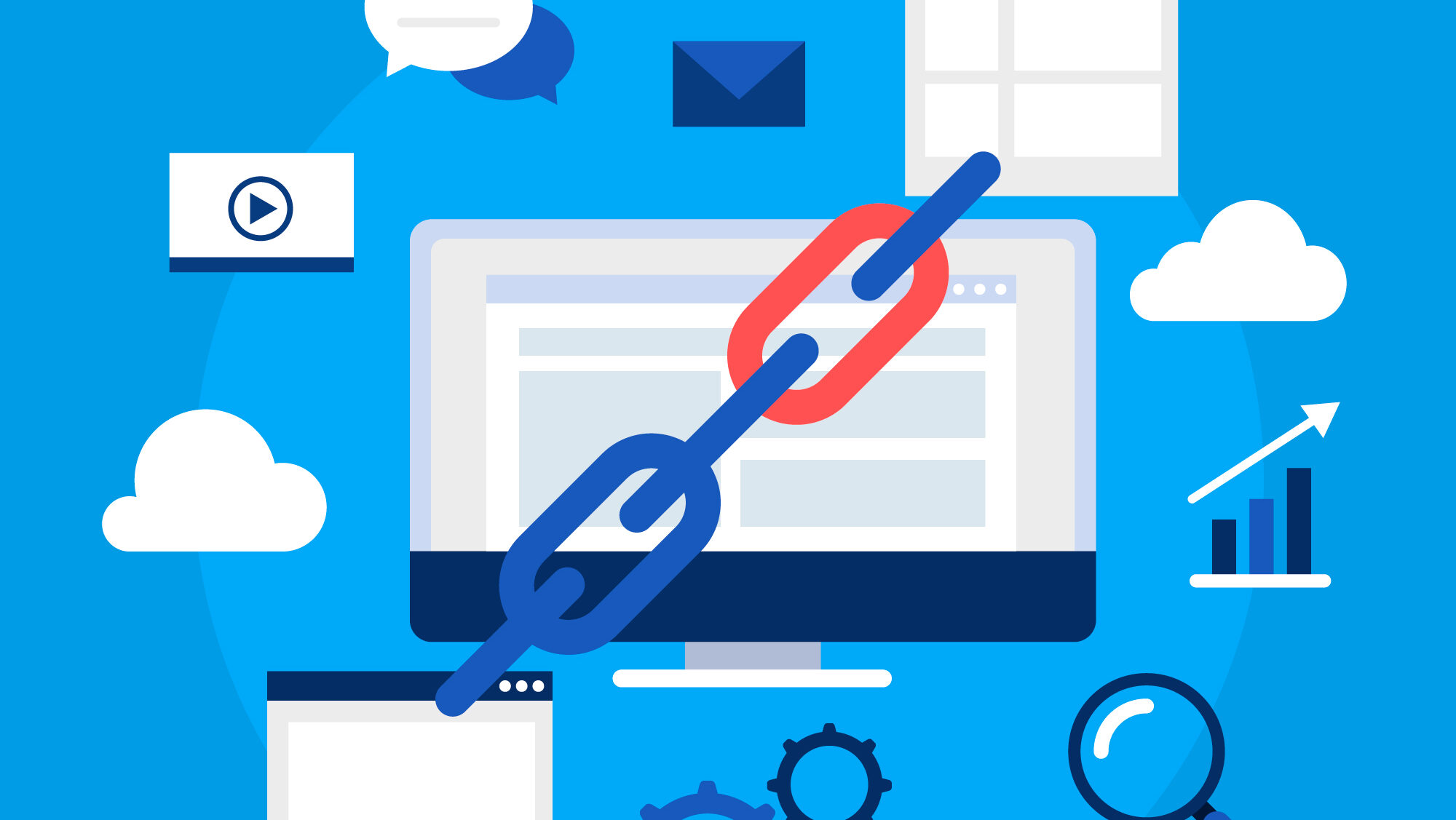
Master Internal Linking and Boost SEO Success
Master Internal Linking and Boost SEO Success
Ever wondered if internal linking really matters for SEO? It definitely does.
Consider it as creating pathways within your website, allowing visitors to easily navigate your content while search engines understand its structure better. Internal links distribute page authority and rank power throughout the site.
By honing your internal linking strategy, you can reduce bounce rates by up to 40% and increase time spent on site, boosting that all-important SEO ranking. Google loves when sites are easy to crawl, and internal linking makes it a breeze while efficiently managing your crawl budget.
Let’s get linking, folks!
Understanding Internal Linking
Internal linking, combined with quality backlinks, is a cornerstone of SEO that strengthens your site’s navigation and user experience, but don’t worry, it’s easier than it sounds.
Essentially, internal links, also known as contextual links, are hyperlinks that connect one page of your website to another page on the same website.
These links are crucial because they help search engines understand the hierarchy and relationship between different pages on your site, which can lead to improved indexing, crawling, and ultimately, the ranking of your pages.
The stronger your internal linking structure, the more likely users are to navigate smoothly through your site, making them feel like they’re on a seamless journey rather than lost in a sea of content. In fact, well-organised internal linking can bolster organic traffic by up to 40%, as it encourages more page views and reduces bounce rates. So, think of internal links as “roads” connecting your website’s various neighbourhoods.
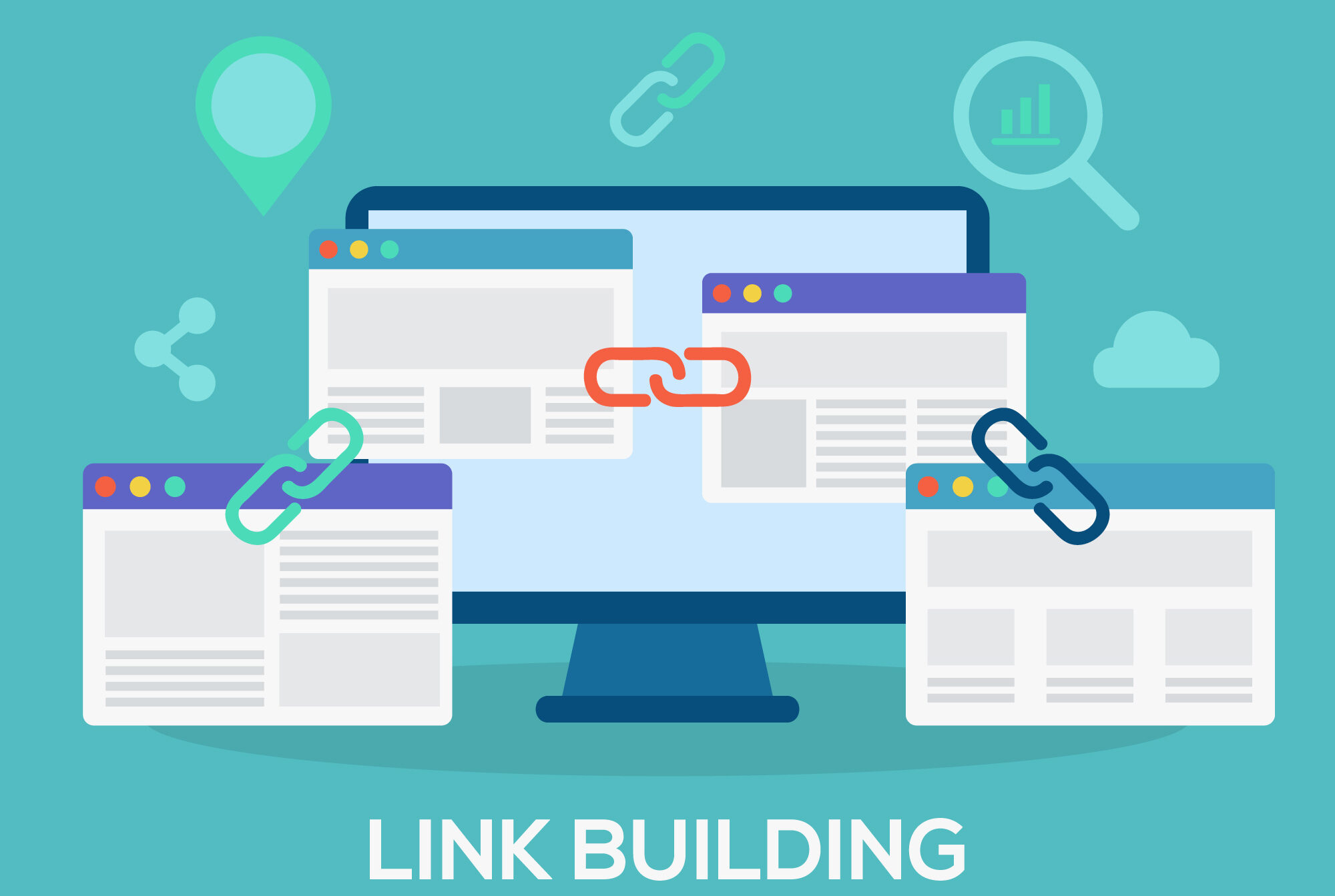
Importance of Internal Links for SEO
So, why are internal links crucial for SEO success? Well, they play a vital role in search engine optimisation and user engagement on your site, where optimization is key to achieving better performance in search rankings.
To start, internal linking is key to a search engine’s ability to crawl your website, helping them find and index your content more effectively. A site with a good internal linking strategy can ensure that search engines not only discover all your pages but also understand their importance based on the site’s architecture. This helps you target those “juicy” keyword rankings.
Furthermore, these links distribute page authority, ranking power, and link equity throughout your site, contributing to how search engines perceive your content. By linking related content together, you can guide search engine bots to the more significant pages you want to be recognised. Think about it like leading Google down the yellow-brick road to your most valuable assets.
Finally, from a user perspective, internal links make your website a more enjoyable place to visit, reducing the chance of visitors getting the boot because they couldn’t find what they were looking for. When Google Analytics derives insights that your visitors are sticking around, it signals search engines that your content is relevant and useful. This can be the tipping point that helps you edge ahead of your competitors in those search engine results pages.
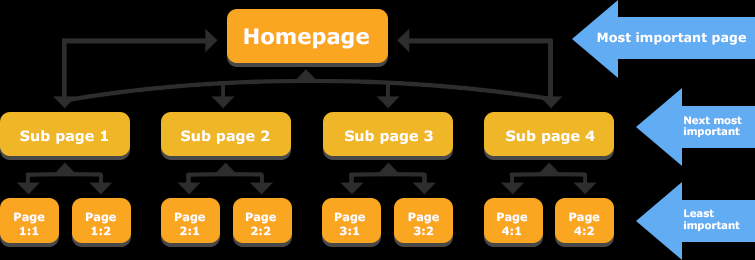
Image Source: SeoClarity
Creating an Internal Linking Strategy
Crafting a sound internal linking strategy is like setting a GPS for both users and search engines.
In 2021, statistics showed that websites with strategic internal linking can boost page views by up to 25%.
So, it’s no small matter because without an internal linking strategy, you’re missing out on the chance to fully utilise the SEO potential of your pages, ensuring none of your great content is left in the dark.
Start with a map of your current pages, assessing which ones are already well-linked and which are under the radar. Use tools like Google Search Console, Moz, or Ahrefs for insights on your most popular pages, and think about connecting high-authority pages to those needing a boost.
Ultimately, by consistently evaluating your links and updating them, you’ll maintain a dynamic internal linking strategy that pays dividends.
Best Practices for Internal Linking
Let’s dive into the details of mastering internal linking for SEO success. Here’s how you can create valuable internal links and optimize your pages effectively.
- Link Between Content-Heavy Pages The most effective internal links connect articles, forming a robust linking structure within your site. Ensure your main pages like the homepage, About, and Contact pages are well-linked, but focus on linking long-form articles to naturally spread internal links.
- Use Descriptive Anchor Text Internal links with descriptive anchor text are best for SEO. Anchor text should clearly describe the linked page’s content. For instance, link to an article about Google’s algorithm with anchor text like “latest Google algorithm updates” instead of vague phrases like “click here.”
- Balance the Number of Links Per Page Too many internal links can dilute their value. A study by Zyppy found that pages with over 50 links saw declining traffic. Start with at least five relevant internal links per page, considering header, footer, and menu links in your count.
- Update Old Articles with New Links Combine internal linking with updating old content for maximum impact. Regularly refresh your articles by adding new content, updating stats, and inserting new internal links to recent content.
- Add Links Where They Make Sense Avoid placing links randomly at the end of articles. Instead, find logical points in your content where topics overlap and add links there. This enhances the reader’s experience and adds value.
- Use Dofollow Links Only Ensure your internal links are dofollow, as nofollow links don’t pass PageRank or anchor text value. Dofollow links help search engines crawl and rank your pages effectively.
- Consider Site Navigation and Architecture Internal linking shapes your site’s architecture and user experience. Direct more links to cornerstone content to increase its visibility. Thoughtful linking can improve user engagement and retention.
- Create High-Quality Content A strong internal linking strategy relies on having plenty of quality content. Focus on creating content that meets your audience’s needs and naturally includes internal links to guide them through their journey.
- Conduct Regular Link Audits Regularly audit your internal links to identify broken links, outdated references, and unnecessary redirect chains. Use tools like ScreamingFrog to streamline this process and ensure your linking strategy remains effective.
By following these steps, you can enhance your internal linking strategy, boost SEO, and improve user experience on your site.
Tools for Internal Linking Analysis
If you’re diving into internal linking analysis, some powerful tools are essential to streamline the process and make it efficient.
Ahrefs and Moz offer comprehensive internal linking analysis as part of their SEO toolsets, along with valuable insights on how backlinks influence your overall SEO strategy.
They provide insights into your existing linking structure by identifying orphan pages, suggesting optimal link placements, and providing visualisation tools to map out your internal link pathways.
Google Search Console is another free option that is superb for checking which of your pages are internally linked. It comes in handy for small businesses or those just starting on their internal linking journey. With a clean interface, it helps you spot “orphan” pages and optimise the crawlability of these pages.
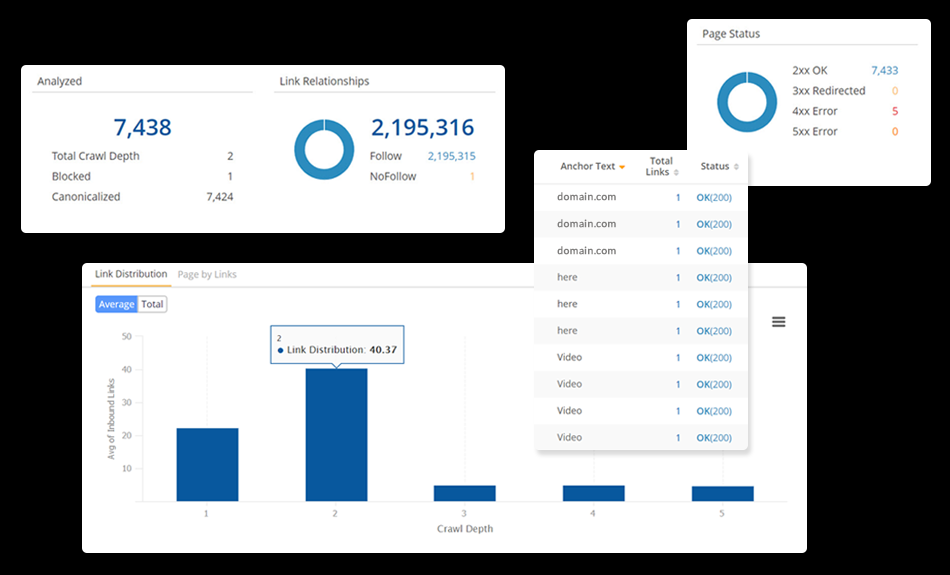
Image Source: SeoClarity
Identifying High-Value Pages for Links
Let’s talk high-value pages.
In the world of SEO, not all pages are created equal. The key is to figure out which pages pack the most punch in terms of generating traffic, leads, or conversions. Typically, these are the pages that cater to your audience’s needs and showcase your expertise or unique offerings. Start by identifying your top-performing content or cornerstone content that’s crucial to your main goals.
Data analytics tools can pinpoint these valuable pages.
These pages often include a mix of – not just ones with high traffic and low bounce rates – but also those generating long-tail keywords and topic clusters.
A good idea is to look at pages attracting external backlinks, as these usually indicate authority and relevance, and linking internally to them can power up other pages on your site. Focusing on these pages when planning your internal linking strategy ties directly into boosting your SEO performance. This ensures users and search engines easily navigate your site, helping you climb the rankings ladder as we edge closer to 2024. Keep your most impactful pages interconnected and strategically distribute link equity for maximum benefit.
How Many Internal Links Should You Include Per Page?
The ideal number of internal links per page isn’t set in stone—it varies based on your content and audience. While there’s no definitive number that guarantees higher SERP rankings, a good rule of thumb is to include about 3 internal links in a 150-word article. This helps maintain a balance, ensuring you’re not overwhelming readers while still linking to relevant pages.
If you’re unsure, it’s okay to include fewer links. Experiment to find what works best for your website and audience, adjusting as needed to optimize user experience and SEO.
Types of Internal Links
Before you start incorporating internal links, it’s essential to understand the basic types to use them effectively.
Contextual Links
Contextual links are embedded within the body of your content, surrounded by relevant text. They often provide additional information about the topic. For instance, in an article about SEO, you might link to a blog post on internal linking. These links are powerful because they help Google understand the link’s context, potentially boosting your SERP rankings.
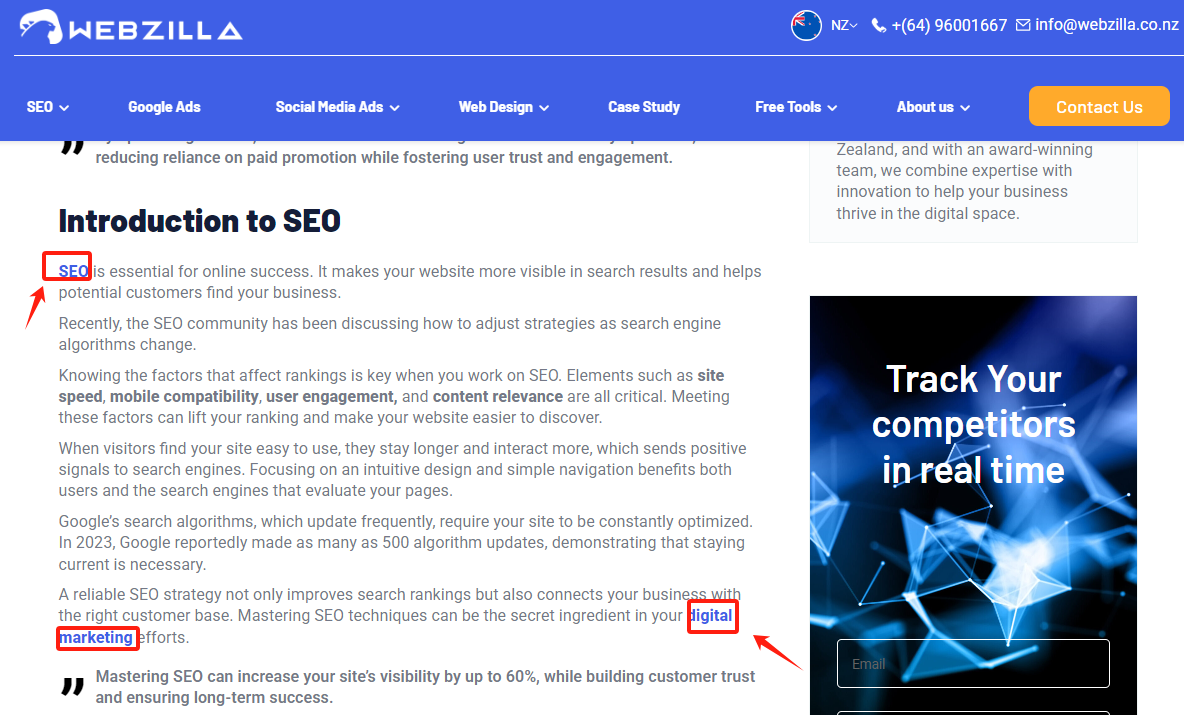
Navigational Links
Navigational links are found in your website’s navigation menu, guiding visitors to your most important pages. For example, on an eCommerce site, you might include a link to your product categories page, helping users find what they need easily.
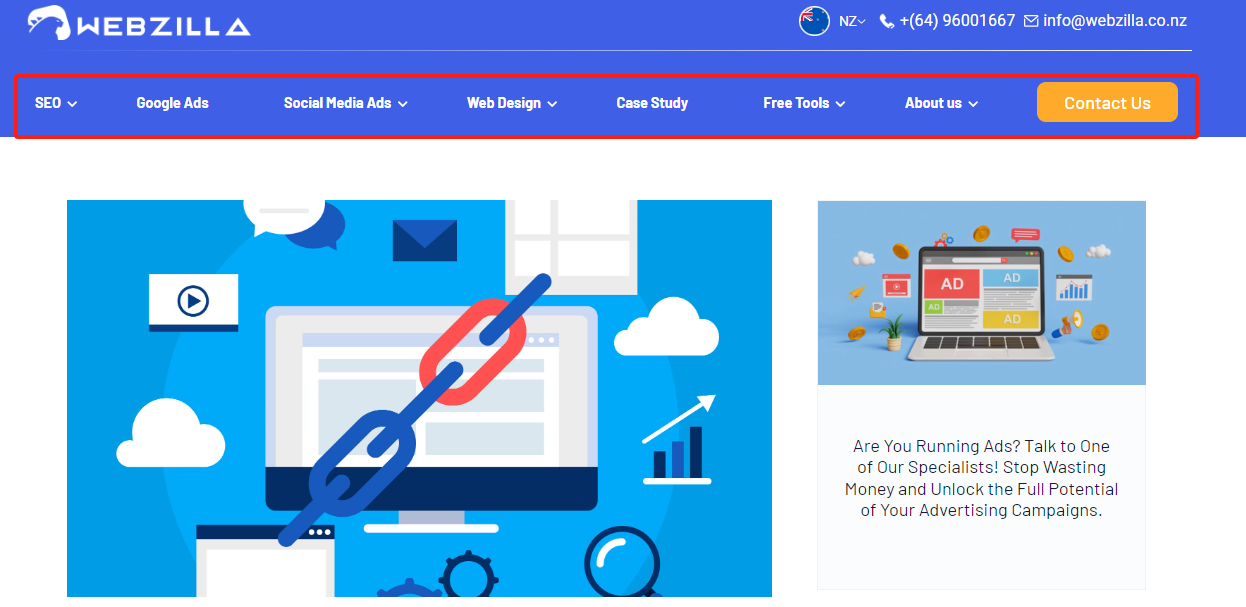
Footer Links
Footer links are located in the bottom section of your website and typically link to key pages, enhancing user experience. On a corporate site, you might include a footer link to the contact page, making it easy for visitors to access your contact information.
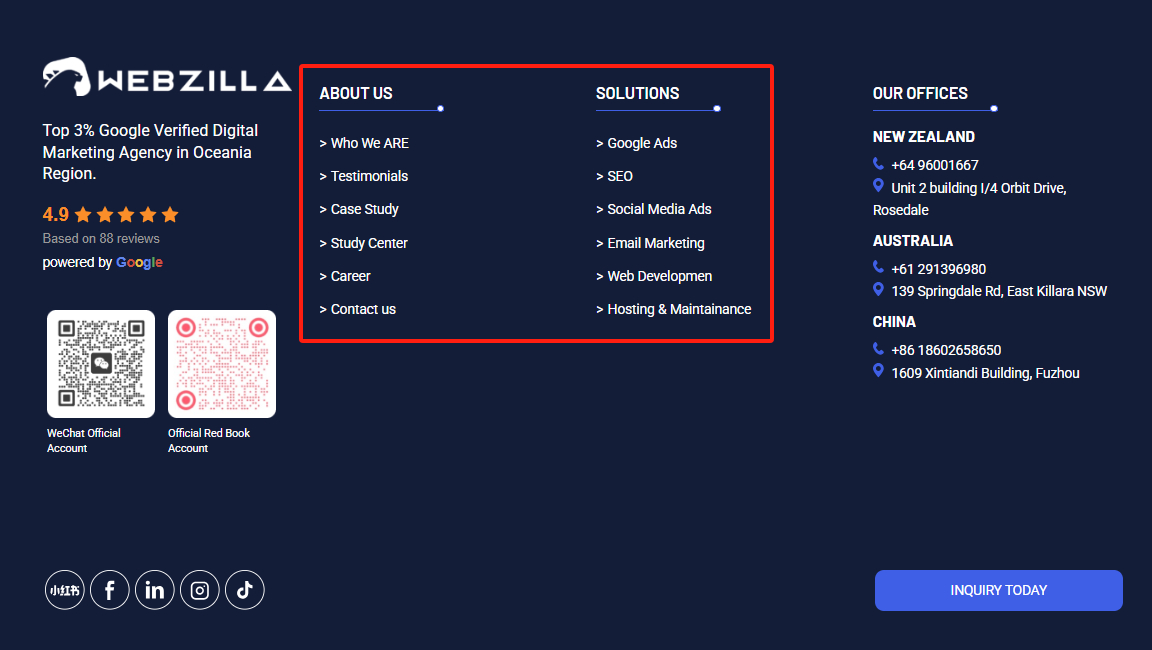
Image Links
Image links differ from other internal links as they use images instead of text to link to other pages. For example, on a fashion website, you might use an image of a model wearing a dress, linking it to the product page for that dress. Image links can effectively break up text and target specific keywords with your images, as demonstrated in the fashion example.
Structuring Content Silos
Structuring content silos means arranging your website content into clear categories and subcategories that revolve around your main topics and themes.
By doing so, you create interconnected clusters of related content, making it easier for search engines like Google to understand the context and relevance of your pages. Imagine your website as a city, with content silos being the suburbs that house similar topics, leading users smoothly from one related piece of content to another.
This technique involves creating a hierarchical arrangement of your content. By strategically linking related articles, you help both users and search engines quickly find and index relevant information, boosting those SEO-friendly vibes across your site.
Plus, when you optimise internal links within these silos to point towards high-value pages, you enhance their SEO potential, ensuring that your site doesn’t just attract visitors but engages them longer. Your website becomes a well-organised, user-friendly space where each page plays a crucial role, enhancing interactions and improving overall site performance.
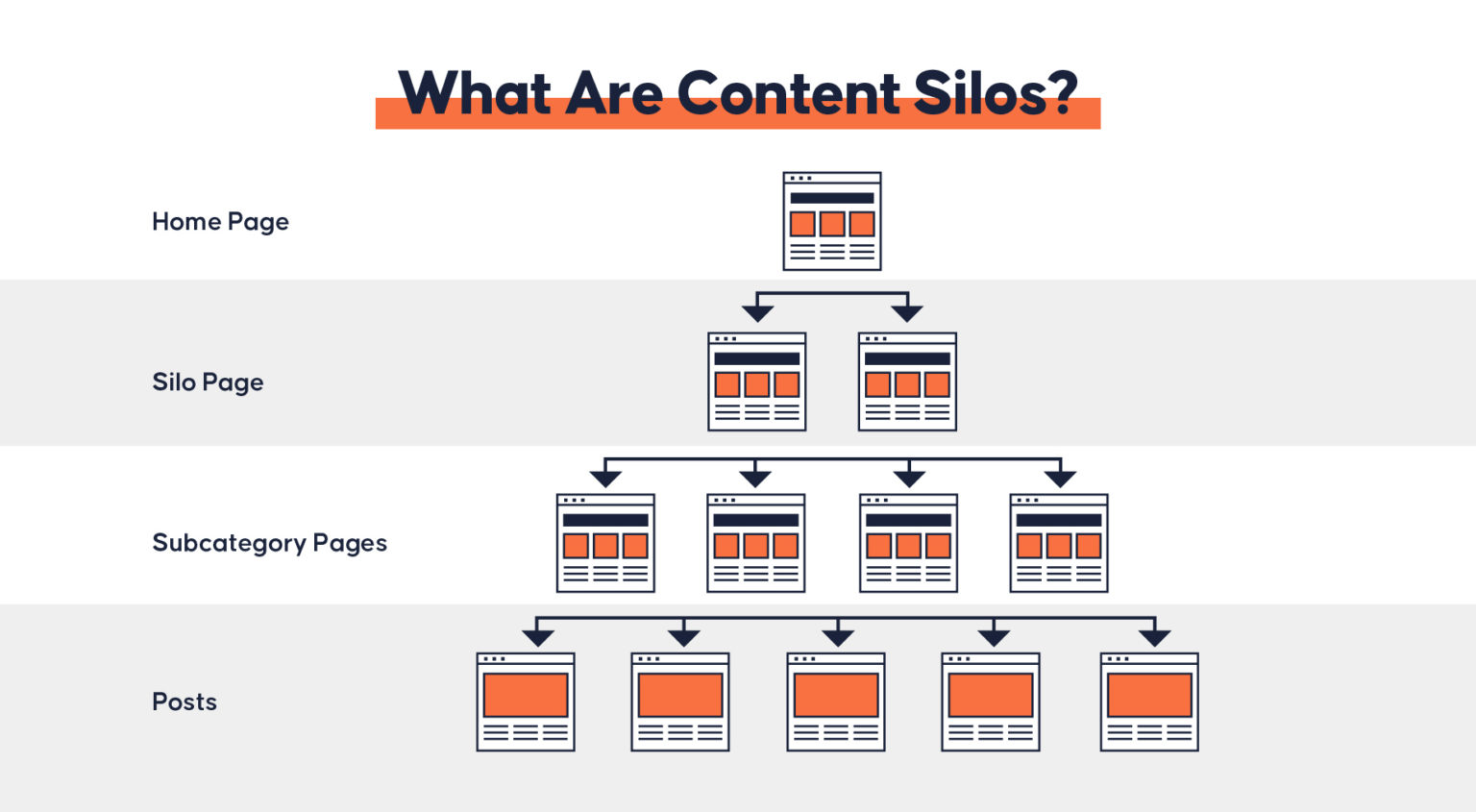
Image Source: inquivix
Linking to Related Content
Linking to related content with strategic anchor text is a powerful way to enrich your website’s experience, guiding users to discover more, and improving your site’s SEO. It’s like creating a web of interconnected topics.
Related content links are easy to implement; they’re simply links to other relevant articles. Users can flow naturally across your site.
Incorporating these links, along with effective keyword research, keeps visitors engaged longer, reducing your bounce rate (that’s when someone leaves quickly) and boosting search engine rankings.
Make sure your related content links are natural and serve the reader’s interests, offering genuinely valuable paths to explore further.
Data shows sites with well-strategised internal links typically see a 40% increase in page views, indicating a more engaging and seamless user experience. And who doesn’t want that?
Remember, the goal isn’t just to keep users. Enhance connections across content. Linking related articles is key to making this happen effectively.
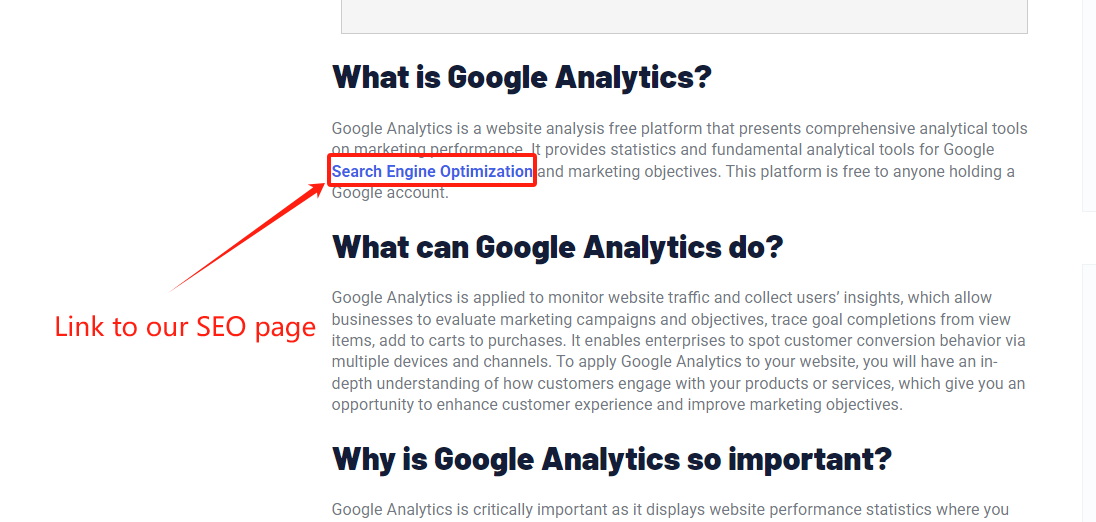
Avoiding Common Internal Linking Mistakes
We all want our websites to shine, but are you making these common mistakes with internal linking?
In 2016, Google’s algorithm, a clever digital detective constantly evolving, started rewarding sites that got their internal linking strategy right. However, it’s not just about plastering links everywhere. In fact, stuffing links can lead to penalties, and no one wants their hard work to go unnoticed.
So, it’s best to avoid using the same anchor text repeatedly. This doesn’t send a great signal to the search engines and might reduce the value of your internal links. Variety is the spice of life, and it applies to your keywords too!
Another pitfall is linking to low-value pages. While you might want to guide users everywhere, ensure you’re not channelling them to pages that don’t offer much. Pages buried beyond the 3-click rule can suffer from less authority and reduced visibility, so keep your links meaningful and easily navigable.
Regularly auditing your internal links can save you from these mistakes, ensuring they continue to serve both your users and search engines well.
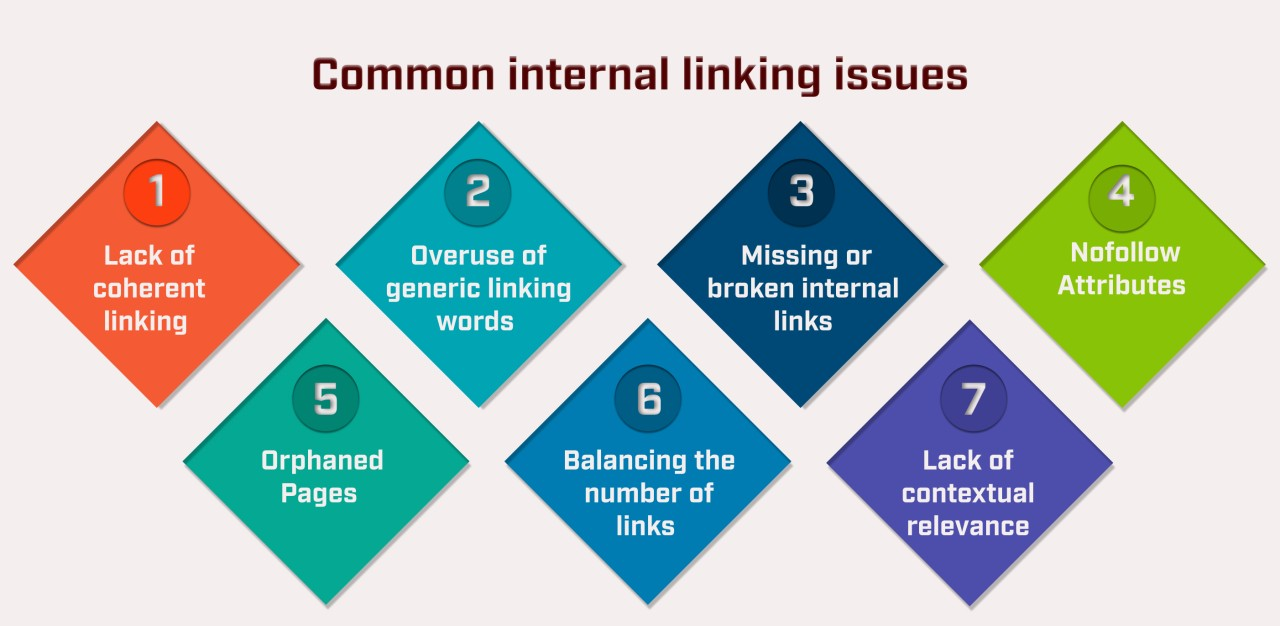 Image Source: Linkedin
Image Source: Linkedin
Monitoring and Updating Internal Links
Gone are the days when you could set it and forget it with your internal links.
Now, regularly checking those links is a must-do for any website owner. About every three to six months, sift through your site to ensure your internal links are still functioning as they should. This means making sure the pages they link to haven’t wandered off into the digital abyss. Remember, broken links can severely hurt your site’s SEO performance and lead to a poor user experience.
Interestingly, about 42% of marketers say that consistent updates to internal links have resulted in improved search rankings. With pages shifting and content evolving, a periodic update isn’t just about maintenance; it’s about staying ahead of the curve. Cleverly optimised links continue to provide search engines with clear pathways that enhance their indexing capabilities.
For example, as your website grows, older content might become more relevant or trending again; updating your internal links to highlight these pieces can be crucial. Embrace tools like Google Analytics or SCREAMING FROG (appropriately) for the technical side of things, ensuring there are no unnecessary hiccups in linking journeys. It’s like having a tidy closet – everything in its place, and a place for everything.
Impact of Internal Linking on User Experience
Internal linking is a powerhouse for enhancing user experience by guiding visitors effortlessly through your website, and this has a ripple effect on SEO.
Users appreciate easy navigation, which internal links facilitate by connecting relevant content seamlessly.
This web of connections helps users find valuable information faster—think of it as a map of curated content paths, leading to lower bounce rates, longer site visits, and increased conversion opportunities.
A well-thought-out internal linking structure ensures users are never more than a few clicks away from the content they’re interested in, minimising frustration and maximising engagement. In fact, websites with optimised internal links see up to a 30% increase in user retention, highlighting the essential blend of aesthetics and functionality that keeps people coming back for more.
Internal Linking to Boost Page Authority
Internal linking is a secret weapon for SEO.
By strategically placing internal links within your site, you give search engines a roadmap to understand the hierarchy and importance of your pages. This not only enhances user navigation but also sends signals to search engines about the priority of pages. Consequently, pages with multiple internal links pointing to them are often deemed more authoritative.
The key is quality over quantity in your internal linking.
Search engines reward smart internal linking strategies – so it’s important to use these links to highlight high-value pages and distribute ranking power across your site. You’re essentially building a hierarchy that helps both search engines and users see what’s most crucial.
Boosting page authority with internal links is not just about increasing clicks; it’s about fostering a meaningful connection between pages that aids in passing along SEO equity. Post-October 2023 SEO insights suggest that sites leveraging comprehensive internal linking strategies not only improve visibility but also fortify their page authority and domain strength, keeping them competitive in the digital landscape.
